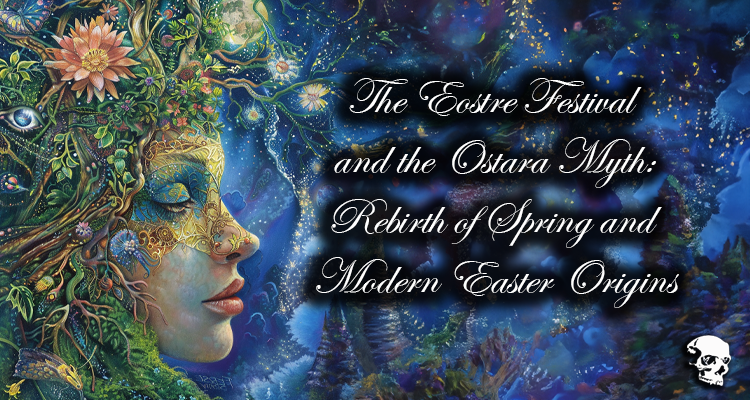Currently Empty: $0.00

The Eostre Festival and the Ostara Myth: Rebirth of Spring and Modern Easter Origins
The enigmatic figure of Eostre, or Ostara, embodies the arrival of spring, signifying dawn, rebirth, and the rejuvenation of life itself. This ancient deity, rooted deeply in Germanic mythology, heralds the warmth of the sun after the long embrace of winter. The mythological tapestry woven around Eostre and the celebration of the Ostara festival is rich, blending themes of fertility, renewal, and the cyclical nature of life and death, which have subtly influenced the modern celebration of Easter.
Eostre: The Goddess of Spring
People celebrate Eostre, known by various names, including Ostara and Eastre, as the Germanic goddess of dawn and spring. This deity, shrouded in the mists of time, is often associated with the renewal of life and the blooming vitality of the natural world. The scant historical references, notably by the Venerable Bede in the 8th century, describe her as a figure of immense importance during the spring equinox, with festivals held in her honor to celebrate the resurgence of life.
Despite the sparse records, the symbolisms tied to Eostre — the hare and the egg — remain potent icons of fertility and new beginnings. The hare, with its vigorous breeding, symbolizes fertility and abundance, a natural representation of spring’s fecundity. Eggs, emblematic of new life, reinforce this theme of rebirth and renewal. These symbols, deeply intertwined with the essence of Eostre, find their echoes in the Easter traditions of today, where bunnies and Easter eggs dominate the celebratory landscape.
The Ostara Myth and Its Celebration
The festival of Ostara marks the spring equinox, a time when day and night stand in perfect balance, heralding a period of light and growth. This celebration venerates the goddess Eostre, rejoicing in the earth’s reawakening. Ancient customs, such as the decoration of eggs and the mythology of the hare, highlight humanity’s enduring reverence for the cycles of nature and life. These customs, steeped in the fertility and vitality of spring, have seamlessly woven their way into modern Easter festivities.
From Pagan Rites to Christian Easter
The transition from pagan spring festivities to the Christian celebration of Easter illustrates a fascinating syncretism of beliefs and traditions. The early Christian church, expanding through Europe, encountered deeply rooted pagan customs celebrating the renewal of the earth. Instead of eliminating these practices, the early Christian church integrated them into the Christian liturgical calendar, resulting in Easter becoming a celebration of Jesus Christ’s resurrection. This blending of traditions ensured that the essence of the spring equinox, symbolizing rebirth and renewal, continued to be celebrated, albeit under a new guise.
Modern Echoes of Ancient Traditions
Today, the symbols of Eostre and the Ostara festival — the rabbit (or hare) and the egg — are ubiquitous during the Easter celebration, serving as reminders of the festival’s ancient origins. These symbols, transcending their pagan roots, have become emblems of hope, rebirth, and new beginnings. As we celebrate Easter, we unknowingly pay homage to Eostre and the enduring human connection to the cycles of nature and life.
In the heart of spring, as we observe the traditions of Easter, we are partaking in a celebration that stretches back through the millennia, connecting us with our ancestors who also stood in awe of the changing seasons. The myth of Eostre and the Ostara festival remind us of the perpetual cycle of death and rebirth, inviting us to reflect on the themes of renewal and hope that are as relevant today as they were in ancient times.
Are you enjoying this article or our site? Love of Gothic and the Dark Matters & Mischief magazine are run by dedicated volunteers, and we rely on crowdfunding to cover our expenses. Your support is crucial to keep us going! Consider becoming a paying member of our Patreon or purchasing something from our shop to help us continue providing content and community support. Thank you for your support!
